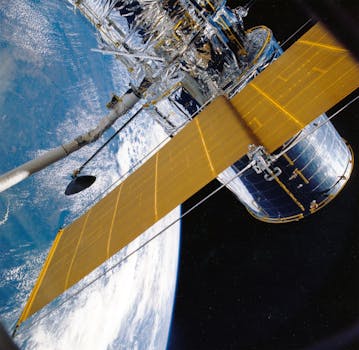GEO Satellites: Understanding the Technology and Its Applications
GEO satellites, or Geostationary Earth Orbit satellites, are a type of satellite that orbits the Earth at an altitude of approximately 36,000 kilometers above the equator. They are called geostationary because they appear to be stationary in the sky, as their orbital period matches the Earth’s rotational period. GEO satellites play a crucial role in modern telecommunications, providing global coverage and enabling a wide range of applications, from television broadcasting to mobile communications.
The technology behind GEO satellites is complex and involves a range of components, including the satellite itself, the launch vehicle, and the ground control system. The satellite is equipped with transponders, which are devices that receive and retransmit signals, as well as antennas, which are used to transmit and receive signals. The launch vehicle is used to launch the satellite into orbit, and the ground control system is used to monitor and control the satellite’s operations.
Applications of GEO Satellites
GEO satellites have a wide range of applications, including television broadcasting, mobile communications, weather forecasting, and navigation. They are also used for military communications, earth observation, and scientific research. One of the most significant applications of GEO satellites is in the provision of broadband internet services, particularly in remote and underserved areas where traditional terrestrial infrastructure is lacking.
In addition to their practical applications, GEO satellites also play a critical role in the global economy. They enable international trade and commerce by providing a means of communication and data transfer between different regions and countries. They also support the development of emerging technologies, such as the Internet of Things (IoT) and 5G networks.
Challenges and Limitations of GEO Satellites
Despite their many benefits, GEO satellites also face a number of challenges and limitations. One of the main challenges is the risk of satellite failure, which can have significant consequences for the services that rely on them. Another challenge is the increasing congestion of the geostationary orbit, which can lead to interference and collisions between satellites.
In addition to these technical challenges, GEO satellites also face regulatory and environmental challenges. The use of GEO satellites is subject to international regulations, which can be complex and difficult to navigate. There are also concerns about the environmental impact of satellite launches and the disposal of satellites at the end of their life.
Future Developments and Innovations
Despite these challenges, the future of GEO satellites looks bright. There are a number of new technologies and innovations that are being developed to improve the performance and capabilities of GEO satellites. These include the use of advanced materials and propulsion systems, as well as the development of new types of satellites, such as nano-satellites and mega-constellations.
One of the most significant developments in the field of GEO satellites is the emergence of commercial satellite operators, such as SpaceX and OneWeb. These companies are launching large constellations of satellites into low Earth orbit, which will provide global coverage and enable a wide range of new services and applications.
In conclusion, GEO satellites are a critical component of modern telecommunications, providing global coverage and enabling a wide range of applications. While they face a number of challenges and limitations, the future of GEO satellites looks bright, with a number of new technologies and innovations being developed to improve their performance and capabilities.
